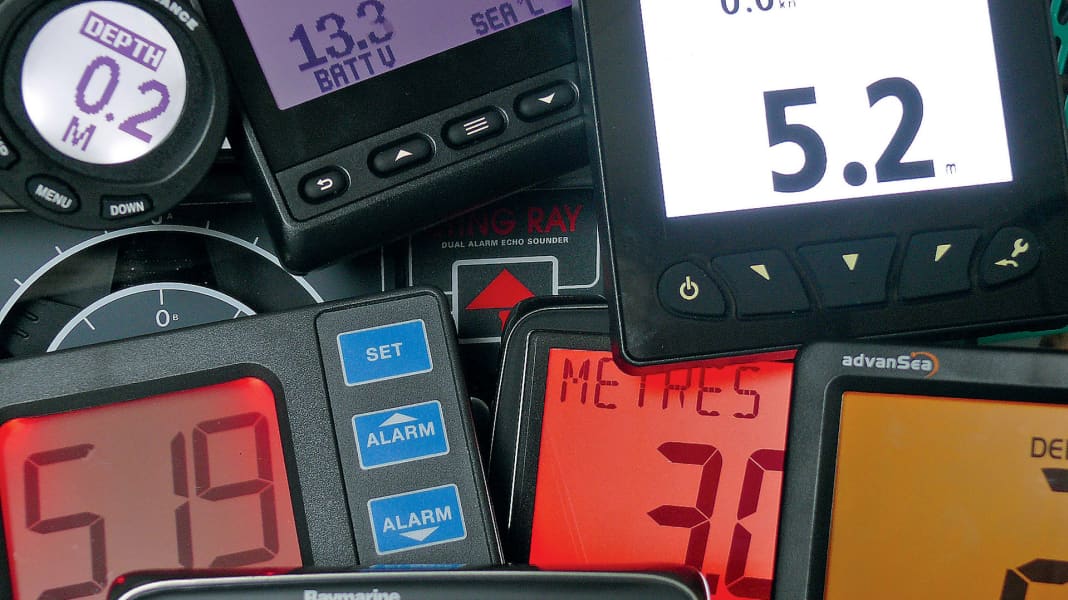
If the propeller or shaft are in danger of making contact with solid parts of our planet, the echo sounder display becomes the centre of attention. Otherwise, the device tends to lead a shadowy existence. It shows the water depth - nothing impressive, right? Or is it?






In our practical test with 14 current depth gauges, we came to very different results in areas that are crucial for motor yachts.
We analysed seven devices that are part of networked instrument systems, six individual devices and one handheld echo sounder. You can budget between 150 euros and 1125 euros for the echo sounder navigation aid, but the price is not an indication of the practical benefits.
Although the most expensive equipment is also among the test winners, even devices costing less than 200 euros deliver satisfactory results.
Twelve of the test devices are typical built-in devices with a numerical display. Two participants stand out in particular: one is the hand-held echo sounder from Plastimo. It is actually held in the water with your hand while you point it towards the bottom like a torch and then press the measurement button.
Of course, you don't have to read the display under water; the last value is displayed for ten seconds after the button is released - practical in the dinghy.
Today, the Stingray from Nasa is once again an eye-catcher. The display principle with the rotating illuminated dot is decades old. But it has a great additional benefit compared to all digital competitors: With a little practice, you can use it to judge the condition of an anchorage and distinguish the bottom echo from schools of fish.
The functional principle
To understand why there are different types of echo sounders, let's start with an excursion into physics: sound does not propagate suddenly, it takes time. You know this from thunderstorms - the thunder comes long after the lightning. Based on the time span, you can even count how far away the thunderstorm is.
The echo sounder works in a similar way. The only difference is that it does not wait for the next flash, but instead emits a short tone into the water at regular intervals - this is known as a ping, because this is what it sounded like on early devices. The time it takes for the echo to return from the bottom can be converted directly into the water depth.
Current devices use frequencies between 150 and 250 kilohertz. People cannot hear such a high tone directly - but its beginning can be perceived as a regular, soft crackling sound with many transducers. You do not perceive the echo: sound is much faster in the water than in the air, the few metres to the bottom and back are covered in fractions of a second - too fast for the human senses.
Solid floor?
If only the bottom provided a signal, then the echo sounder world would be simple. In reality, however, the device "sees" everything that has a density other than water, such as tall seaweed, fish and submarines - if there are any. An echo sounder even penetrates soft ground and receives a rather blurred echo.
You can read the full test report in the February issue of BOOTE, on sale from 18 January 2017.
